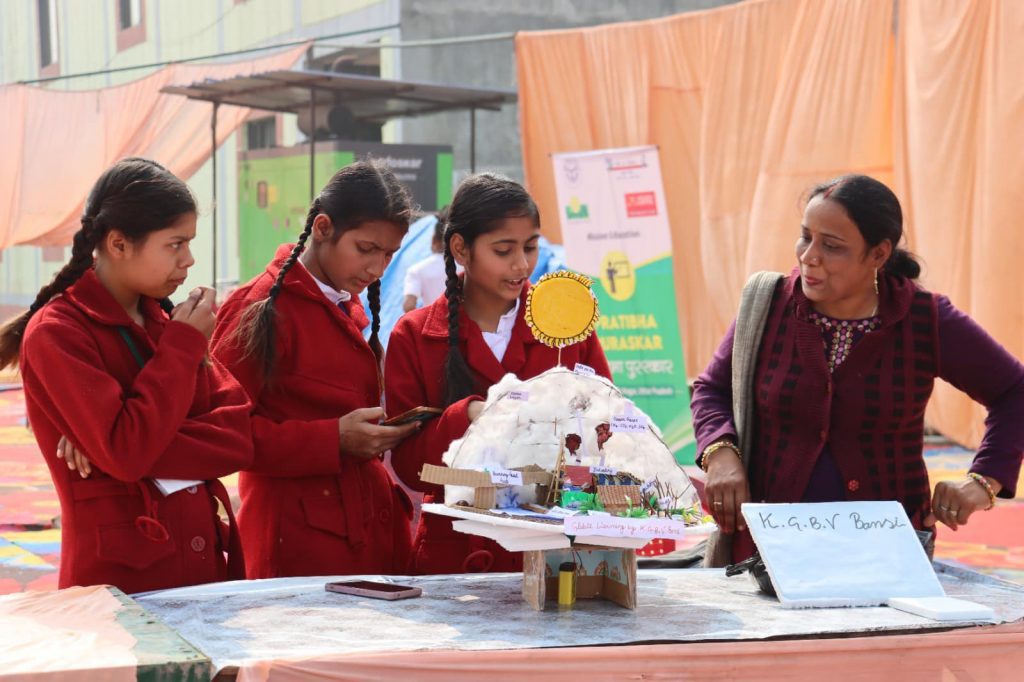In the age where Artificial Intelligence is growing by leaps and bounds, what sets apart humans from the machines? Or a more positive approach to this change would be – what kind of opportunities become available to humans as computers and AI perform the repetitive and mundane tasks, freeing us up to focus on other areas?
The answer to both these questions is creativity and design thinking. As the need to perform predictable and repetitive tasks is eliminated, it means that humans can focus on higher-level innovations, creating better new-age solutions to the problems that we face today.
This has all been made possible by the growth that we have achieved in the field of Science, Technology, Engineering, Arts, and Mathematics in the last few years. Also known as STEAM education, these fields of study primarily rely on building creative thinking capabilities among the learners and further promote innovation on the job as they enter the workforce.
The Path to Innovation
Engineering and technology have always been a great companion to human growth and creativity. After the industrial revolution, many tasks that were previously performed by hand were now done at an incredibly faster pace and in a fraction of time.
Initially this created discomfort among people who thought that technology would take away jobs from humans. However, the reality, as we know today, is different from what was thought. The untapped human potential was realized as more and more people got education and became innovators. This led to an overall growth of the human society.
It is this capability to innovate and create that has paved the way for human society to grow rapidly in an incredibly short time. As we look at the history of human civilization, we can see that the modern technology arrived only a short time ago. Humans spent hundreds and thousands of years as hunters and gatherers.
However, it was through the first innovations, like discovering fire, creating tools to hunt, agriculture, settlements, etc., that we moved on the path of where we stand today. The initial journey was slow, but as the frequency and quality of innovations grew, the speed of growth kept getting faster and faster.
The last 500 years in human history have been especially important as this is the time when focus on science and technology grew, enabling us to reach where we are today. While modern computers were invented not more than 80 years ago, we have already reached a point where these machines are ready to develop a complex intelligence of their own. All this can be attributed to human innovation of the last 100 years.
STEAM Education and Innovation
STEAM education, beyond textbook learning, fosters innovation by engaging students in hands-on activities, experiments, and projects. This approach encourages exploration, questioning, and creation, shaping a generation that not only understands existing technologies but also contributes to their evolution. This innovative mindset propels students into STEM-related careers, where they become architects of the technological future.
These skills that students learn as part of STEAM education serve as a strong foundation for creativity and innovation in their professional environments. They can think critically and solve problems. This is especially crucial in a world where technological changes are rapid, and humans need to adapt to these changes quickly.
STEAM education prepares the students to be adaptable and equip themselves as per the changing conditions. This allows them to stay relevant even in the changing times. The training that learners receive as part of their education and its interdisciplinary nature prepares them for this technology-driven world.
As we witness accelerating technological advancement, investing in STEAM education ensures the next generation are more than consumers of technology. They are active contributors, propelling innovation and shaping a future driven by knowledge, creativity, and the transformative power of STEAM.
The Future of STEAM
The 21st century is undoubtedly the century of STEAM. At the turn of the century, nobody would have imagined that we would be standing where we are today. Imagine – smartphones were not even a reality at the beginning of the 21st century. Within 25 years, we are not innovating with technology like metaverse, virtual reality, and much more.
Not just that, we have entered a new era of space exploration too. Everywhere we look, we see STEAM playing a central role in the forward movement of the world. Whether it is the discovery of new sources of energy or finding a way to ensure a more equitable growth for everyone; science seems to be the answer.
Globally, there is a greater emphasis on STEAM education. There is still a huge gap between access to STEAM education for both men and women, but several initiatives are now adopting ways to fill this gap. In India, National Education Policy (NEP) 2020 is also focused on promoting STEAM education among both men and women.
This trend is expected to move in the same direction in the future. A multi-disciplinary, innovation-focused education like Smile Foundation’s STEAM initiative is what we need today to solve the world’s problems. It is only through innovation that we can tackle issues like global hunger, climate change, access to healthcare, etc. In this age of innovation and creativity, the possibilities are endless.









